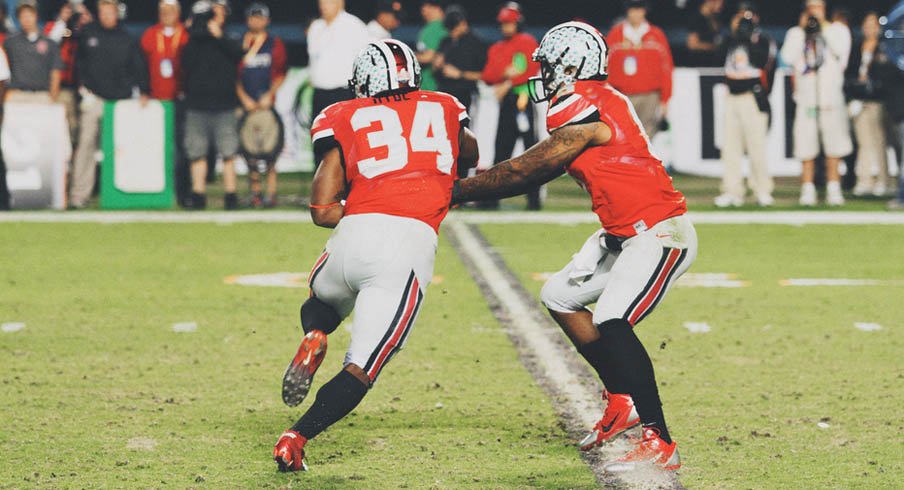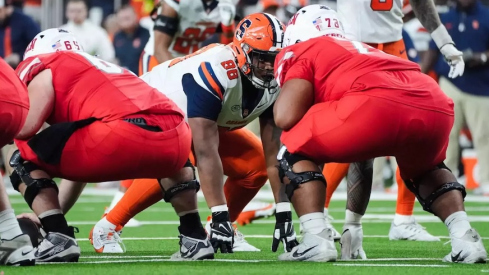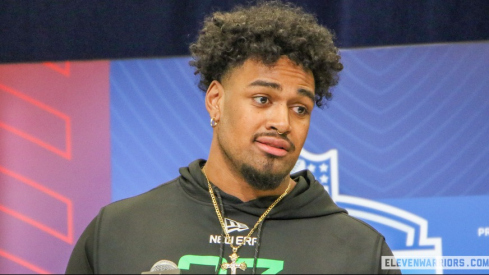As regular readers know, one of the biggest trends in college football is packaging a pass option with running plays. With a packaged play, the offense will execute a run play – except for one receiver designated to run a pattern.
HERMAN'S HEAD: Gun Pap Play-Action | The QB Run Game
Depending upon the defense's reaction, the quarterback has the option to pull the football from the hand-off post-snap and deliver it to the wide receiver.
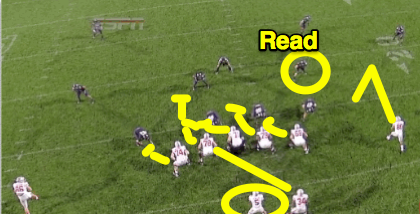
Packaged plays have become an increasingly big part of the Ohio State offense. And at a coaching clinic in April, Ohio State offensive coordinator Tom Herman provided details as to how the Buckeyes package plays, which we examine below.
It Starts at the Base
Herman and Urban Meyer begin by packaging routes with their two base inside tailback run plays -- tight zone and power. Tight zone, aka inside zone, is the basis of the Buckeye offense.
The offensive linemen take aggressive half steps play side, seeking to create double teams upon the down linemen before working to the second level. The halfback aims for the frontside hip of the center, looking for the cutback to the backside A gap bubble.
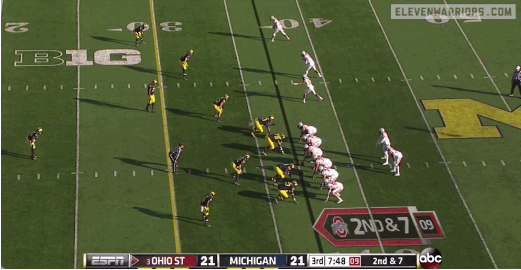
Meyer and Herman can package one of several routes with tight zone. One basic combination is a bubble screen, either from doubles or trips. The quarterback reads the second level linebackers. If they aggressively play the run the quarterback has the freedom to pull the football and throw the bubble to the slot receiver.
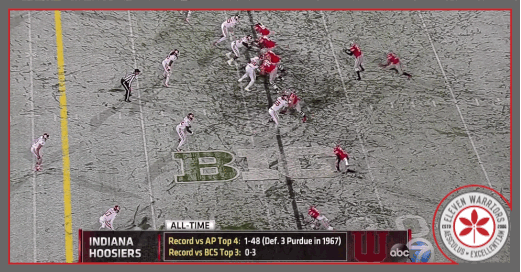
Smoke and Power
Ohio State's other base run play is power. Unlike tight zone, power uses gap blocking. The play side offensive linemen block down, while the backside guard pulls. The tight end kicks out the defensive end and the backside guard leads through the hole on the frontside linebacker.
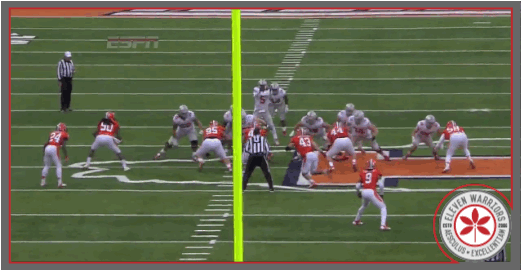
With power, the Buckeyes often package a smoke, aka flash screen. Unlike a bubble screen, the smoke screen goes to the outside wide receiver. The receiver takes a step upfield and then comes back to the football. The inside receiver(s) kick out the defensive backs, creating a seam.
The quarterback reads the outside linebacker responsible for the slot receiver. If the linebacker overcommits to the run game the quarterback can pull and throw the screen. Flash screen is a versatile combination that can not only be combined with power but also to the backside of tight zone.

Hitch it Up
The final route that is often combined with tight zone and power is a quick hitch. With tight zone, the Buckeyes utilize a backside hitch.
With power, the hitch is run to the front side, allowing the quarterback to make the necessary read.

The quarterback reads through the outside linebacker to the cornerback. If the corner takes an immediate deep drop (to allow the safeties to aggressively play the run) or bites inside on the run action, the quarterback can throw the hitch.
Combining bubble, smoke and hitch routes with tight zone and power all serve the same purpose – preventing a defense from cheating second level defenders against the run game. And if the defense does cheat, then Meyer and Herman are happy to take easy yards resulting from the defense's structural unsoundness. As the Buckeye coaching staff looks to more complicated packaged plays, it is clear that run/pass options will only become a more important part of the Ohio State offense going forward.
